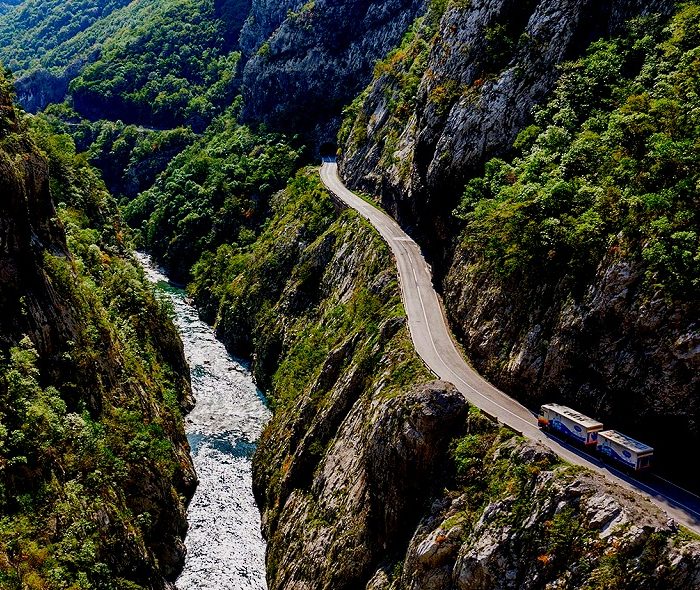Denmark might be a small country, but it’s packed with an incredible diversity of experiences that will captivate every traveler. From vibrant cities to serene landscapes, this Nordic gem offers something for everyone. As someone who’s traversed its charming streets and breathtaking countryside, I’m excited to share the ultimate guide to exploring Denmark.
Must-Visit Cities
1. Copenhagen (København)
The crown jewel of Danish cities, Copenhagen masterfully blends historical grandeur with modern innovation, offering an experience as charming as it is forward-thinking. While most tourists are drawn to the iconic Nyhavn harbor, with its colorful 17th-century townhouses and bustling waterfront, there’s far more to discover if you venture off the beaten path.
- Christianshavn: This canal-lined district, reminiscent of Amsterdam, is home to the alternative community of Freetown Christiania, where you’ll find colorful murals, quirky architecture, and a unique, laid-back vibe. It’s also a great spot for a scenic canal tour or a stop at the renowned Noma restaurant.
- Vesterbro: Once a working-class area, this neighborhood has transformed into a hub of creativity. Here, you’ll find some of the city’s best cafes, artisanal bakeries, and vintage shops. Don’t miss Meatpacking District (Kødbyen), which buzzes with trendy restaurants and nightlife.
- Indre By (City Center): The historic heart of the city where medieval architecture meets contemporary Danish design. Landmarks like Rosenborg Castle and the Amalienborg Palace showcase Copenhagen’s royal heritage, while the Strøget pedestrian street offers a shopping experience ranging from luxury boutiques to quirky local finds.
For a break from the urban scene, head to Tivoli Gardens, one of the world’s oldest amusement parks, or rent a bike to explore the city like a local. Copenhagen’s dedication to sustainability is evident everywhere—from its clean harbor waters to its green rooftops and urban bike lanes. Whether you’re indulging in New Nordic cuisine or enjoying a sunset over the harbor, Copenhagen promises a captivating mix of tradition and modernity.
Pro Tip: Get the Copenhagen Card for free public transport and entry to over 80 attractions. Trust me, it saved me both time and money!
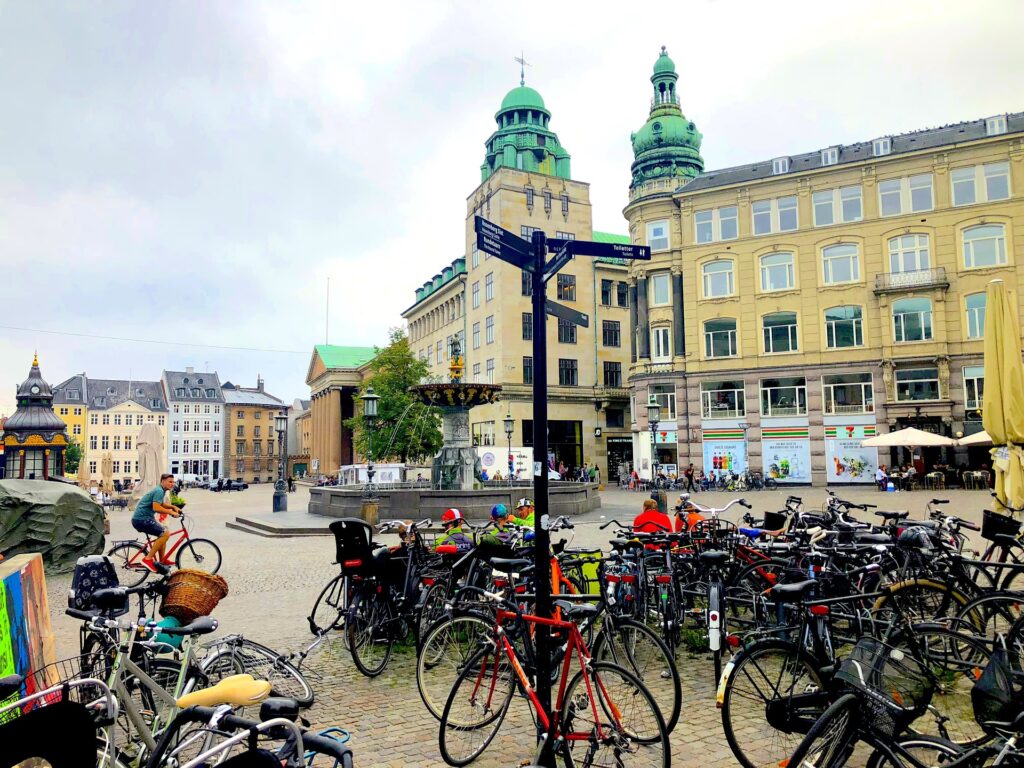
2. Aarhus
Denmark’s second-largest city, Aarhus, is a cultural gem blending history, art, and nature. The ARoS Art Museum, with its stunning Your Rainbow Panorama, offers sweeping city views through a kaleidoscope of colors. History comes alive at Den Gamle By, an open-air museum recreating Danish life across centuries.
Aarhus’s waterfront buzzes with activity, featuring Dokk1, a modern cultural hub, and nearby sandy beaches perfect for relaxation. Food lovers will enjoy the city’s thriving culinary scene, from Aarhus Street Food markets to Michelin-starred dining. With its mix of innovation and tradition, Aarhus is an unmissable Danish destination.
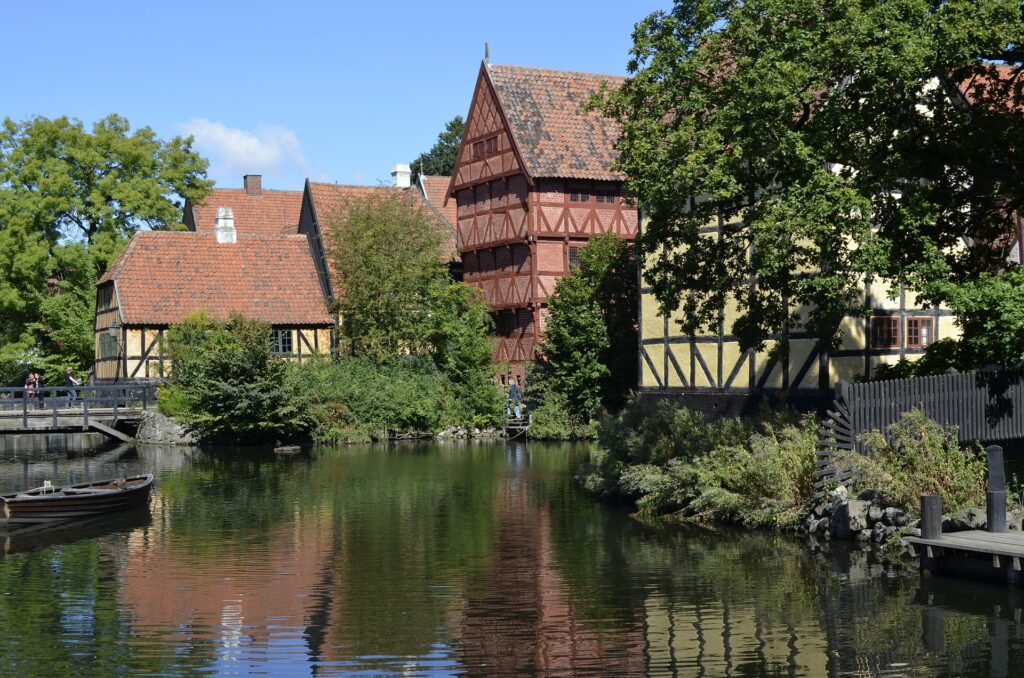
3. Odense
The birthplace of Hans Christian Andersen, Odense feels like stepping into one of his beloved fairytales. The Hans Christian Andersen Museum offers an immersive journey through the storyteller’s life and works, blending interactive exhibits with enchanting displays that bring his characters to life.
The city’s historic charm extends beyond the museum. Wander through the cobblestone streets of the Old Town to see beautifully preserved 18th-century houses, including Andersen’s childhood home. For a more contemporary vibe, visit Brandts Klædefabrik, a vibrant cultural hub filled with galleries, cafes, and shops.
Odense’s tranquil green spaces, such as Munke Mose Park, are perfect for leisurely strolls, while Odense Zoo provides family-friendly fun. The city’s fairytale atmosphere, combined with modern cultural offerings, makes it a magical destination for visitors of all ages.
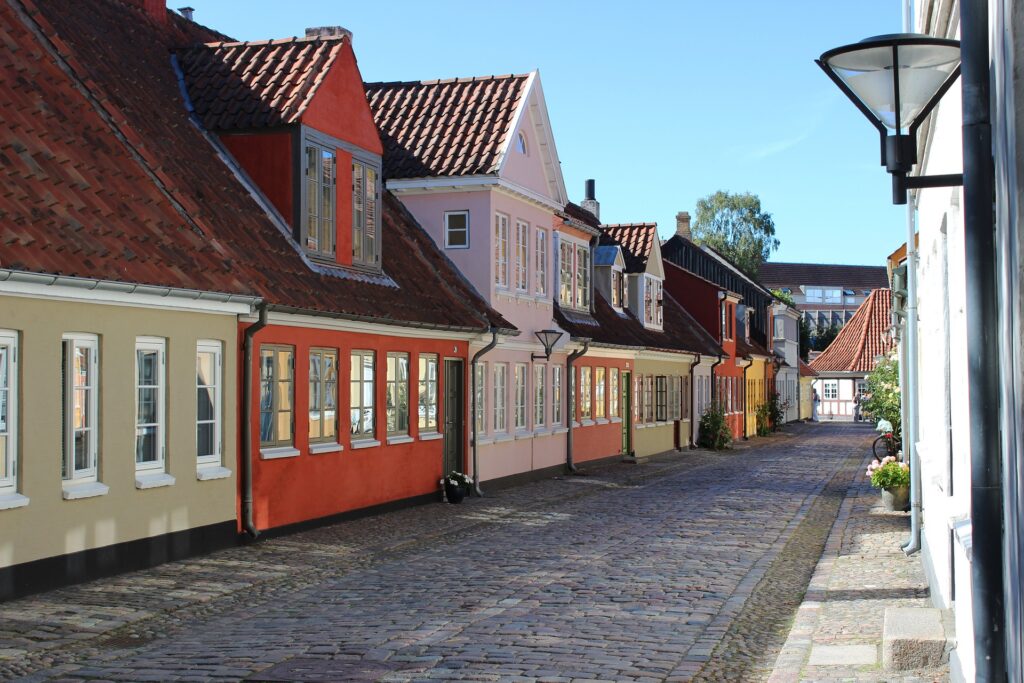
4. Roskilde
Roskilde seamlessly blends Denmark’s rich history with its vibrant modern culture. The Viking Ship Museum is a must-visit, showcasing original Viking ships and offering interactive workshops where you can try your hand at ancient shipbuilding techniques or even sail in a reconstructed vessel.
The city’s historical heart lies at Roskilde Cathedral, a UNESCO World Heritage site and the burial place of Danish monarchs. Its striking Gothic architecture and royal tombs make it a fascinating stop for history buffs.
Roskilde is also renowned for the Roskilde Festival, one of Europe’s largest music events, drawing global artists and music lovers every summer. Beyond history and music, the city’s scenic fjord-side setting offers opportunities for kayaking, cycling, or simply relaxing by the water. Whether you’re exploring its Viking roots or enjoying modern festivities, Roskilde offers a dynamic and enriching experience.

5. Helsingør (Elsinore)
For fans of Shakespeare and history alike, Helsingør is a treasure. Kronborg Castle, the inspiration for Hamlet’s Elsinore, is its crown jewel. Walking through its grand halls and shadowy dungeons, you can almost hear the echoes of the famous soliloquy. The castle, a UNESCO World Heritage site, also offers stunning views of the Øresund Strait separating Denmark and Sweden.
Beyond Kronborg, the city charms visitors with its quaint old town, lined with cobblestone streets, colorful houses, and cozy cafes. For a modern twist, visit the Maritime Museum of Denmark, an architectural marvel built underground around a former dry dock, showcasing Denmark’s rich seafaring history.
Helsingør’s location makes it perfect for a day trip from Copenhagen or even a quick ferry ride to Helsingborg, Sweden. Its blend of literary lore, historical significance, and seaside charm makes it a must-see destination.
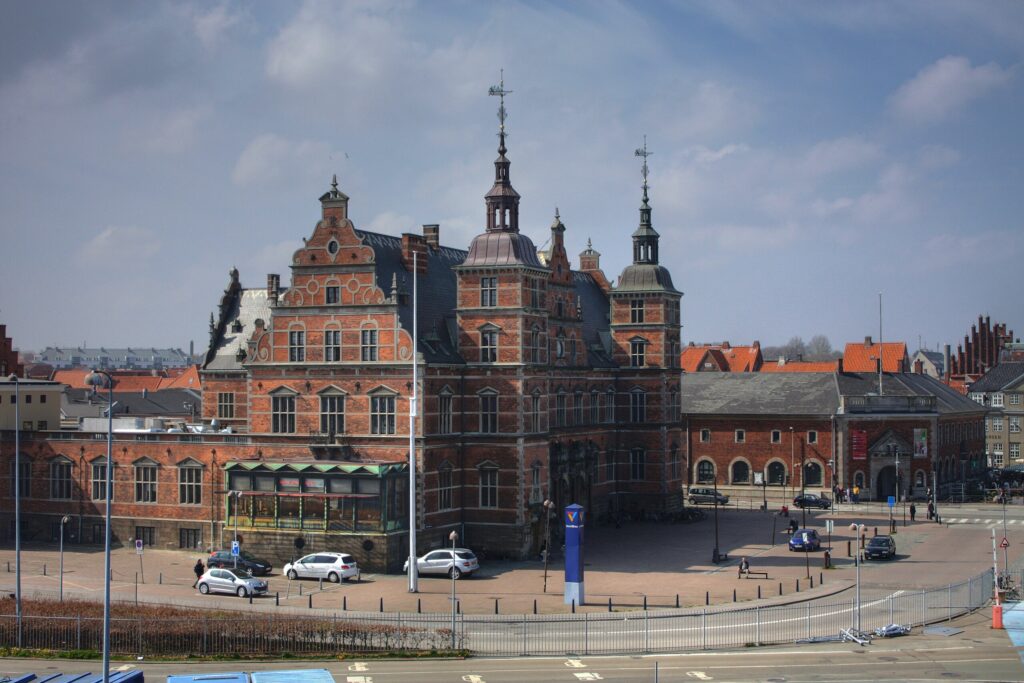
Hidden Gems: Lesser-Known Danish Cities
6. Svendborg
Nestled on the southern coast of Funen, Svendborg is a charming maritime town that exudes tranquility and authentic Danish charm. The town’s picturesque harbor is its centerpiece, dotted with colorful boats and offering stunning views of the South Funen Archipelago—a haven for sailing and island-hopping enthusiasts.
Svendborg’s laid-back vibe invites leisurely exploration. Stroll through its quaint streets, where independent boutiques and cozy cafes create a welcoming atmosphere. History lovers will appreciate landmarks like Christiansminde and the nearby Valdemars Castle, a stunning estate steeped in history.
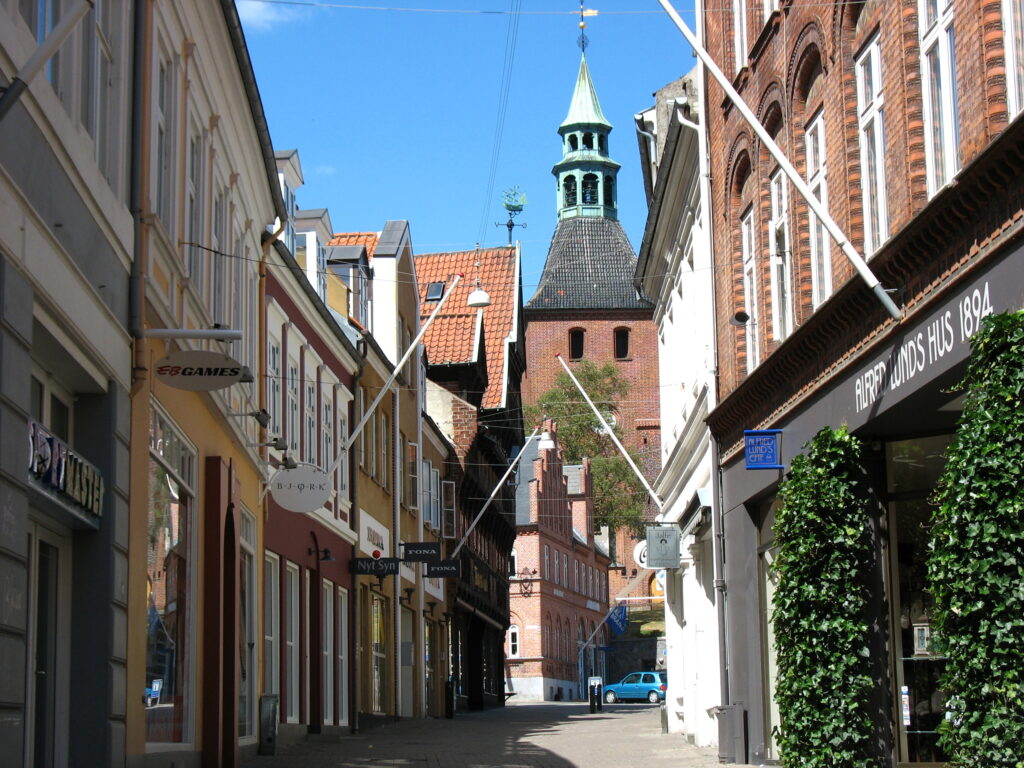
7. Ribe
As Denmark’s oldest town, Ribe is a captivating step back in time. Its cobblestone streets and half-timbered houses create a storybook setting, where every corner seems to echo centuries of history. The town’s centerpiece, Ribe Cathedral, stands as a striking landmark with its Romanesque and Gothic architecture. Climb its tower for panoramic views of the surrounding marshlands.
History comes alive at the Ribe Viking Center, an immersive open-air museum where you can experience Viking-era life through reenactments, crafts, and interactive exhibits. Nearby, the Wadden Sea National Park, a UNESCO World Heritage site, offers a chance to explore Denmark’s stunning coastal ecosystem, with opportunities to spot seals and migratory birds.
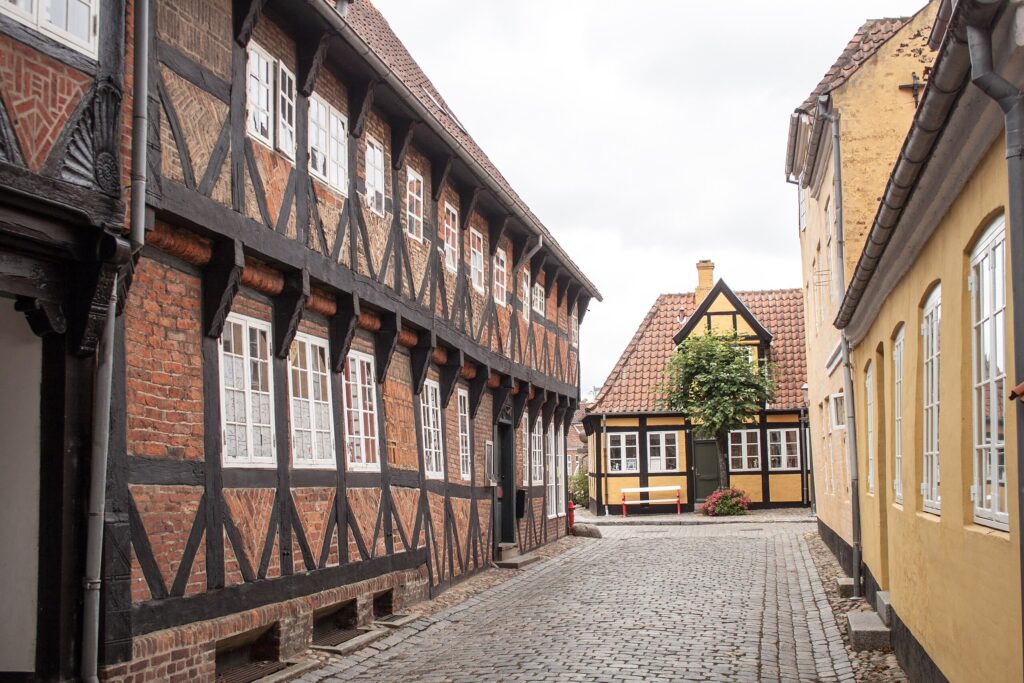
8. Skagen
Perched at Denmark’s northernmost tip, Skagen is a place of natural wonder and artistic legacy. The town is famous for Grenen, the stunning sandbar where the North Sea and the Baltic Sea meet in a mesmerizing dance of waves. Standing at this unique confluence, you can see the distinct currents clashing—a rare and unforgettable sight.
Skagen’s unique light has drawn artists for centuries, inspiring the famous Skagen Painters, whose works are celebrated at the Skagens Museum. The town’s yellow-painted houses with red-tiled roofs and its relaxed, seaside atmosphere add to its charm.

9. Møns Klint
Møns Klint isn’t a city, but its breathtaking beauty makes it a destination you can’t miss. These towering white chalk cliffs rise dramatically above the turquoise waters of the Baltic Sea, offering one of Denmark’s most stunning natural landscapes. Stretching for over six kilometers, the cliffs are best explored by hiking the trails that wind through lush forests and along the cliff edges, offering awe-inspiring views at every turn.
The nearby GeoCenter Møns Klint is an interactive museum that delves into the region’s geological history, from the Ice Age to the formation of the cliffs. It’s a great spot for families and anyone curious about how this natural wonder came to be.
In the surrounding community, you’ll find charming villages and cozy accommodations perfect for a tranquil getaway. Stargazers will also love Møns Klint, as it’s part of a designated Dark Sky Park, offering some of the clearest night skies in Denmark. It’s a haven for nature lovers, adventurers, and anyone seeking a peaceful escape into the wild.

10. Kolding
Kolding is a small yet culturally rich city located in the heart of Jutland. Known for its Koldinghus Castle, a royal fortress dating back to the 13th century, the city offers a deep dive into Denmark’s royal and architectural history. The castle now hosts a modern art museum, where you can admire both contemporary works and historical exhibitions. The city also boasts a beautiful waterfront area and the Trapholt Museum, which blends art, design, and architecture in a picturesque setting.

Natural Wonders: Denmark’s Scenic Landscapes
1. Wadden Sea National Park
The Wadden Sea National Park in Denmark is a true natural wonder and a UNESCO World Heritage site. This vast tidal flat stretches along Denmark’s southwestern coast, and during low tide, visitors can experience the unique phenomenon of walking on the sea floor. The mudflats, which cover around 1,500 square kilometers, are home to an incredibly diverse ecosystem, teeming with marine life, shellfish, and plant species.
The region is a haven for birdwatchers, as it serves as a crucial stopover for thousands of migratory birds traveling along the East Atlantic Flyway. From the iconic white-tailed eagles to the colorful knots and oystercatchers, the Wadden Sea offers exceptional opportunities for birdwatching, especially in the autumn and spring.

2. Roskilde Fjord
Roskilde Fjord is a tranquil yet vibrant destination, offering a perfect blend of natural beauty and outdoor activities. The fjord, located just north of Copenhagen, is ideal for kayaking, sailing, and exploring its serene waters. In summer, the fjord comes alive with boats and water sports, providing an excellent setting for those looking to enjoy a day on the water.
In autumn, the landscape transforms as the trees lining the fjord turn vivid shades of orange and red, creating a breathtaking backdrop for a peaceful paddle or scenic hike along the shoreline. The fjord is also home to charming villages and historic sites, including the Viking Ship Museum in Roskilde, adding a layer of cultural intrigue to your visit.
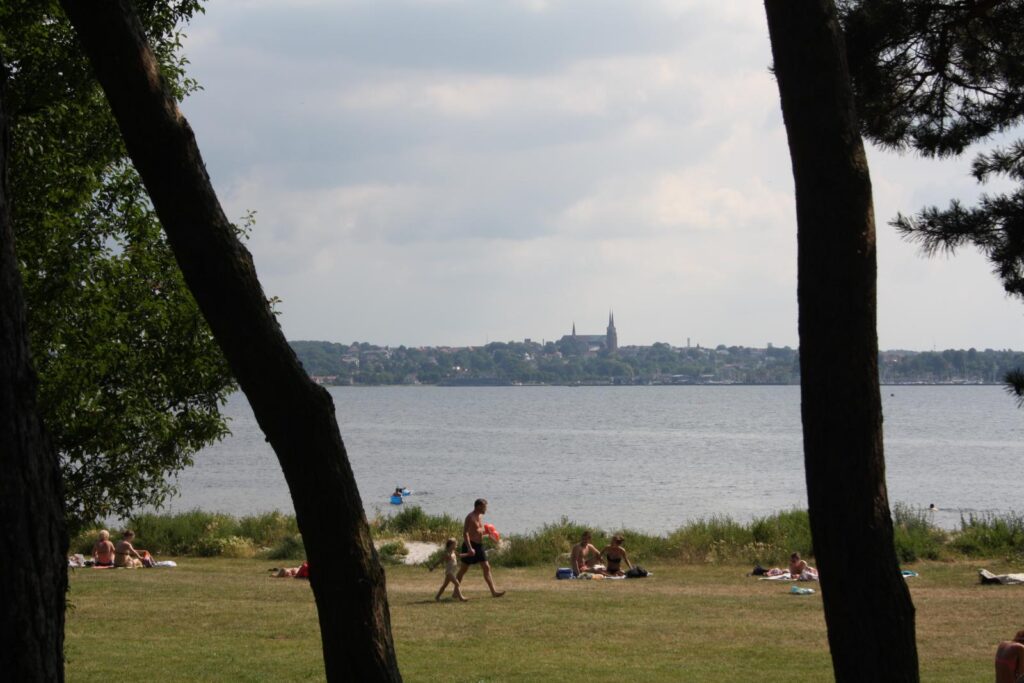
3. Nationalpark Thy
Denmark’s first national park, Nationalpark Thy, is a hidden gem for nature lovers seeking an authentic experience of Denmark’s wild landscapes. Located in the northwest of Jutland, this expansive park offers a vast array of ecosystems, from sand dunes and heathlands to wetlands and forested areas. Its rugged, untouched wilderness is perfect for hiking, with numerous trails weaving through diverse terrains and providing stunning views of the North Sea coast.
The park is also home to rich biodiversity, with a variety of wildlife such as deer, wild boar, and countless bird species, making it a paradise for wildlife enthusiasts and birdwatchers. The unique coastal landscape, shaped by the wind and tides, adds to the park’s allure, with dramatic cliffs and quiet beaches where you can escape into nature.

4. Bornholm Island
Bornholm, often called Denmark’s “sunny island,” is a picturesque destination that feels like a world apart. Located in the Baltic Sea, this island offers a mix of rugged coastlines, lush forests, and charming villages, making it a haven for outdoor enthusiasts and history buffs alike.
One of the island’s most distinctive features is its round churches, unique to Bornholm, which date back to the Middle Ages. These churches, with their thick stone walls and circular designs, are a testament to the island’s rich history and offer a fascinating glimpse into its past.
Bornholm is also known for its stunning natural landscapes, including dramatic cliffs, serene beaches, and dense forests perfect for hiking and cycling. Cycling around the island is an unforgettable experience, with well-marked routes that take you past scenic views, quaint fishing villages, and traditional farmsteads.
For food lovers, Bornholm is renowned for its smoked fish, particularly herring, and its locally produced craft beer and artisanal products.
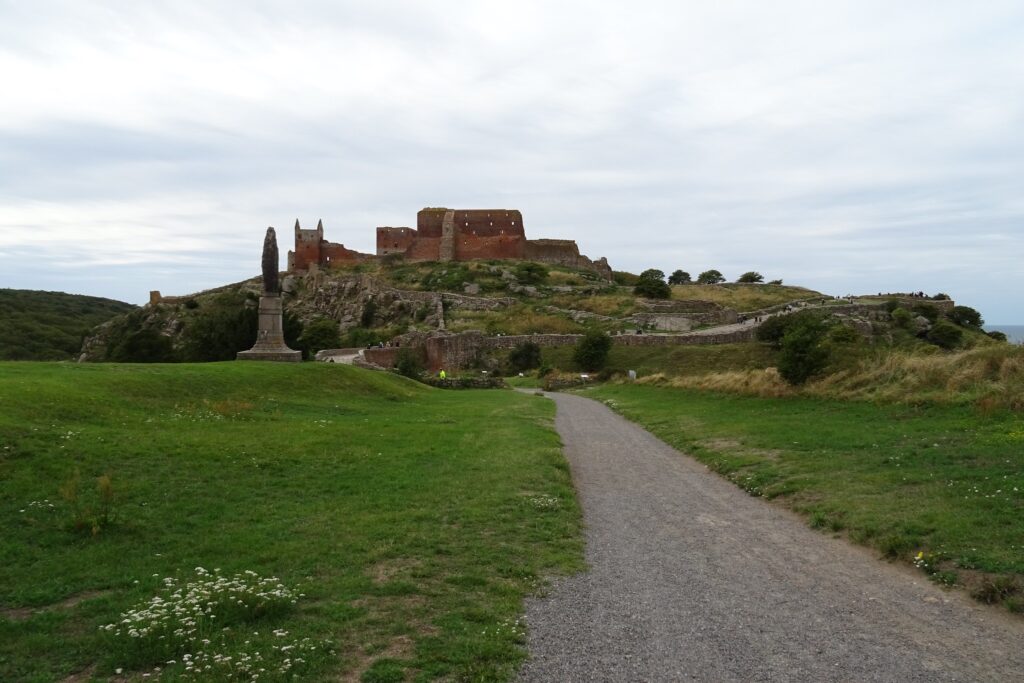
Practical Travel Tips
Transportation
- Renting a Car: Renting a car is the best way to truly experience Denmark’s rural charm. While the cities are easily accessible by public transport, a car gives you the freedom to explore the stunning countryside, coastal villages, and lesser-known attractions at your own pace. The roads are well-maintained, and driving is relatively stress-free, especially outside the larger cities.
- International Driving: If you’re visiting from the EU or many other countries, you’re in luck — your foreign driver’s license is typically accepted. Just be sure to carry an International Driving Permit if necessary, and always check specific regulations before you travel.
- Public Transport: Denmark’s public transportation system is excellent, with frequent and reliable trains and buses connecting major cities and rural areas alike. Trains are especially convenient for intercity travel, offering scenic views of the Danish countryside, while buses can take you to smaller towns and hidden gems.
- Cycling: Denmark is one of the most bicycle-friendly countries in the world, and Copenhagen is often rated as one of the best cycling cities globally. Renting a bike is an easy and enjoyable way to explore urban areas and scenic routes. Many cities have dedicated bike lanes, and cycling is not only eco-friendly but also a fantastic way to experience local culture at your own pace.
Budget Considerations
- Accommodation: Denmark offers a wide range of accommodation options to fit different budgets. Hostels are a great budget-friendly option, especially in major cities like Copenhagen and Aarhus. Mid-range hotels provide comfort and convenience, while Airbnb rentals can offer more personalized and affordable stays, particularly in smaller towns or rural areas. Booking in advance can help secure better deals, especially during peak tourist seasons.
- Food: Eating in Denmark can be pricey, but it’s possible to keep costs down. Budget around 200-300 DKK (roughly 30-45 USD) per day for meals if you’re opting for casual dining or cooking your own meals. Look out for lunch specials at local cafés or try a traditional Danish smørrebrød (open-faced sandwich) from a bakery for an affordable yet delicious meal. Supermarkets offer ready-to-eat meals that can help save on costs, and you can pack snacks for day trips.
- Attractions: Many of Denmark’s attractions, particularly museums, offer discounts for students, youth, and seniors, so always check for these options before purchasing tickets. You can find a number of free or low-cost cultural experiences, like strolling through the royal gardens or enjoying public art installations in cities. For a great deal, look for Copenhagen Card or Aarhus Pass, which offer entry to multiple attractions at a reduced price, along with free public transport.
- Public Transport: Public transport in Denmark is efficient and reasonably priced. Budget around 100-150 DKK (14-22 USD) per day if you’re relying on trains, buses, or metro for getting around the cities. Consider purchasing a City Pass or transport card for discounts on travel. For longer distances, consider booking long-distance train tickets early, as discounts are available for early bookings.
- Activities and Tours: For activities like guided tours, boat trips, or admission to theme parks, you can expect to pay anywhere from 200-600 DKK (30-90 USD). Some cities also offer free walking tours, which are a great way to get an introduction to the city. Booking group tours can often bring the price down significantly.
- Shopping and Souvenirs: Shopping in Denmark can be expensive, but there are great options for souvenirs that won’t break the bank. Look for handmade crafts, local snacks, or Danish design items at markets or discount stores. Budget around 100-200 DKK (15-30 USD) for souvenirs to take home.
- Cycling: Renting a bike is an affordable and fun way to get around. Daily rentals usually cost between 100-150 DKK (15-22 USD). Many cities also offer bike-sharing programs, which are great for short trips and typically cost less than renting a traditional bike.
- Coffee and Snacks: Denmark is known for its café culture. A coffee will typically cost between 30-45 DKK (5-7 USD), and pastries can range from 20-40 DKK (3-6 USD). To keep your budget in check, grab a coffee and snack from a local bakery or café instead of sit-down restaurants.
- Travel Insurance: Don’t forget to budget for travel insurance. It’s an essential expense to ensure you’re covered for unexpected issues, including medical emergencies or trip cancellations. Depending on coverage, expect to pay 10-20 USD per day for a basic travel insurance policy.
Best Times to Visit
Summer (June-August):
The summer months are the peak tourist season in Denmark, and for good reason. With long daylight hours (up to 17 hours a day), the weather is warm and perfect for outdoor activities. You’ll find vibrant festivals, open-air concerts, and bustling city life, especially in places like Copenhagen and Aarhus. However, be prepared for more crowds and higher prices during this time, as it’s the most popular period for both locals and tourists.
Spring (April-May) & Autumn (September-October):
These shoulder seasons offer a fantastic balance of mild weather and fewer tourists. In spring, Denmark begins to bloom with colorful flowers and outdoor events, while autumn brings stunning foliage, making both seasons ideal for hiking or enjoying scenic views without the summer crowds. The weather is pleasant, though still cool, so it’s a great time to explore the cities and countryside. Additionally, many attractions offer discounted prices during these off-peak months.
Winter (November-March):
Winter in Denmark is magical, especially if you’re drawn to the charm of Christmas markets. Copenhagen, in particular, lights up with festive decorations, and cozy cafés and bars serve mulled wine and Danish pastries. The short daylight hours (around 7-8 hours a day) and colder temperatures (ranging from 0°C to 5°C) can be a challenge for some, but the peaceful atmosphere, fewer tourists, and the opportunity to experience Denmark’s winter charm make it worth considering. If you’re a fan of winter activities, this is also a great time to visit for some quieter, more intimate travel experiences.

Cultural Tips
Learn a Few Danish Phrases:
While most Danes speak excellent English, learning a few basic Danish phrases can go a long way in making a positive impression. Simple greetings like “Hej” (Hello), “Tak” (Thank you), and “Farvel” (Goodbye) will show that you appreciate the local culture. Locals are often pleasantly surprised when tourists make an effort, and it can help you connect more easily with people.
Embrace “Hygge”:
A central part of Danish culture, “hygge” refers to a sense of coziness, contentment, and well-being. Whether it’s enjoying a warm cup of coffee on a chilly day, gathering with friends and family, or simply relaxing in a comfortable space, embracing this philosophy will help you enjoy Denmark’s lifestyle. Look for cozy cafés, candlelit dinners, and quiet moments that allow you to unwind and fully appreciate the Danish way of life.
Tipping is Not Mandatory, But Appreciated:
In Denmark, tipping is not as common or expected as in some other countries. Service charges are typically included in the bill at restaurants and cafes. However, if you’ve received particularly good service, leaving a tip of 5-10% is appreciated but not required. In casual settings like cafes or taxis, rounding up the bill or leaving small change is a nice gesture.
Final Thoughts
Whether you’re a history buff exploring ancient castles and Viking heritage, a nature lover hiking through national parks or cycling along the coastline, or an urban explorer discovering the dynamic blend of modern design and medieval charm in cities like Copenhagen and Aarhus, Denmark will surprise and delight you at every turn.
Its unique cultural concepts like hygge, along with stunning landscapes and a rich history, create a sense of warmth and tranquility that stays with you long after you leave. Whether you’re visiting for a weekend getaway or a longer stay, Denmark’s welcoming atmosphere and diverse attractions ensure it’s a country you’ll never forget.

Published December 01, 2024 • 16m to read



